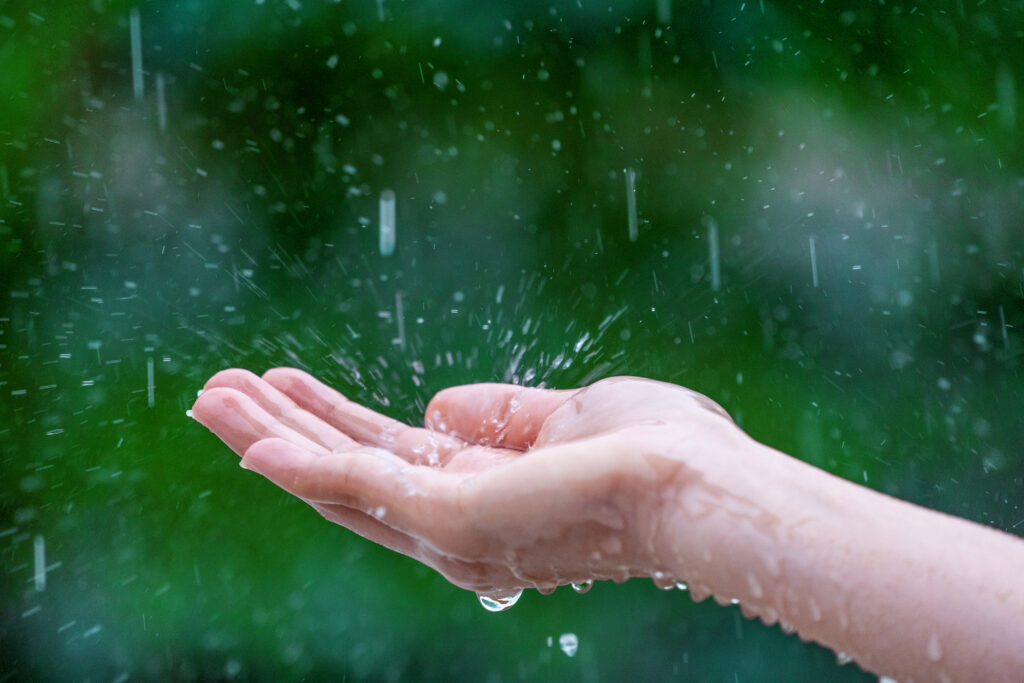Introduction:
Rainwater, a natural resource bestowed upon us by the heavens, has long been a symbol of sustenance and vitality across cultures and civilizations. From ancient times to the present day, rainwater has played a crucial role in shaping societies, sustaining ecosystems, and nurturing life on Earth. In recent years, with the growing concerns over water scarcity and environmental degradation, the practice of rainwater harvesting has gained renewed attention and significance. In this article, we will explore the importance of rainwater, its historical and cultural significance, and the benefits of rainwater harvesting in the modern world.
The Essence of Rainwater:
Rainwater is more than just H2O falling from the sky; it is the elixir of life, essential for the survival of all living beings on Earth. Each droplet of rain carries within it the essence of nature’s cycle – evaporating from the oceans, forming clouds, and returning to the earth as precipitation. This natural process replenishes groundwater, nourishes soil, and sustains the intricate web of life that thrives on our planet.
Historical and Cultural Significance:
Throughout history, rainwater has been revered and celebrated by cultures around the world. In ancient civilizations such as the Mesopotamians, Egyptians, and Indus Valley dwellers, rain was often associated with deities and seen as a divine blessing. Rituals and ceremonies were conducted to appease rain gods and ensure a bountiful harvest. In many indigenous cultures, rain dances and prayers are still performed to honor the sacredness of water and its life-giving properties.
The significance of rainwater is also evident in literature, art, and mythology. From the biblical story of Noah’s Ark to the Hindu myth of Indra, the god of rain, rainwater has been portrayed as both a source of destruction and renewal, reflecting the dual nature of nature’s forces.
Benefits of Rainwater Harvesting:
In today’s world, where water scarcity is becoming an increasingly pressing issue, rainwater harvesting offers a sustainable solution for meeting water needs while reducing reliance on dwindling freshwater sources. By collecting rainwater from rooftops, surfaces, and catchment areas, it can be stored for various purposes, including irrigation, drinking, and household use.
One of the primary benefits of rainwater harvesting is its role in water conservation and management. By capturing rainwater before it runs off into rivers and streams, we can reduce soil erosion, mitigate flooding, and recharge groundwater aquifers. This not only helps to preserve natural ecosystems but also ensures a more reliable supply of water for agriculture, industry, and urban communities.
Furthermore, rainwater harvesting promotes self-sufficiency and resilience in the face of water scarcity and climate change. By harnessing local rainfall, communities can become less dependent on centralized water infrastructure and adapt to fluctuating weather patterns. This is particularly important in regions prone to droughts or where access to clean water is limited.
In addition to its environmental benefits, rainwater harvesting offers economic advantages as well. By reducing water bills and reliance on imported water supplies, households and businesses can save money in the long run. Moreover, rainwater harvesting systems create opportunities for job creation and innovation in the water sector, driving economic growth and sustainability.
Implementing Rainwater Harvesting:
While the concept of rainwater harvesting is simple in theory, its successful implementation requires careful planning, design, and maintenance. The first step is to assess the local climate, rainfall patterns, and water needs to determine the feasibility of rainwater harvesting in a given area. Factors such as roof size, slope, and material should also be considered when designing a rainwater harvesting system.
There are various methods of rainwater harvesting, ranging from simple rain barrels and cisterns to more complex systems incorporating filtration, storage, and distribution components. The choice of system depends on factors such as available space, budget, and intended use of harvested rainwater.
Proper maintenance is essential to ensure the efficiency and longevity of rainwater harvesting systems. Regular cleaning of gutters, screens, and storage tanks is necessary to prevent debris buildup and contamination. Periodic inspections and repairs should also be carried out to address any leaks or malfunctions.
Community Engagement and Education: In addition to individual efforts, community engagement and education play a crucial role in promoting the adoption of rainwater harvesting practices. Public awareness campaigns, workshops, and outreach programs can help to raise awareness about the importance of water conservation and the benefits of rainwater harvesting.
Government incentives, rebates, and regulations can also encourage the widespread adoption of rainwater harvesting technologies. By providing financial incentives or mandating the use of rainwater harvesting in new construction projects, policymakers can stimulate investment in sustainable water management practices.
Conclusion:
In conclusion, rainwater is a precious resource that sustains life on Earth and deserves our utmost respect and stewardship. By harnessing the power of rainwater through harvesting and conservation, we can address water scarcity, promote environmental sustainability, and build more resilient communities. From ancient traditions to modern innovations, rainwater harvesting embodies the timeless wisdom of working in harmony with nature to secure a more prosperous and equitable future for all.
In the words of Thich Nhat Hanh, “When we recognize the virtues, the talent, the beauty of Mother Earth, something is born in us, some kind of connection, love is born.” Let us cherish and protect the gift of rainwater, for it is not only the source of life but also a symbol of our interconnectedness with the natural world.
